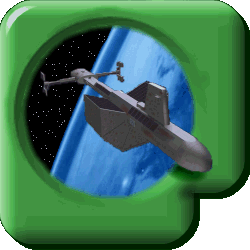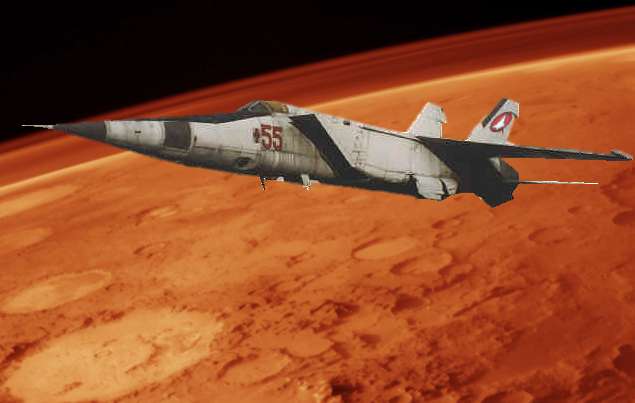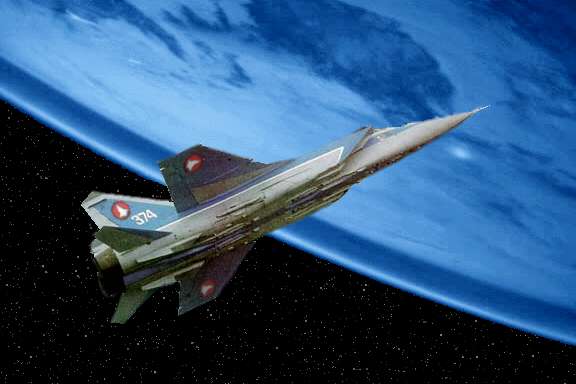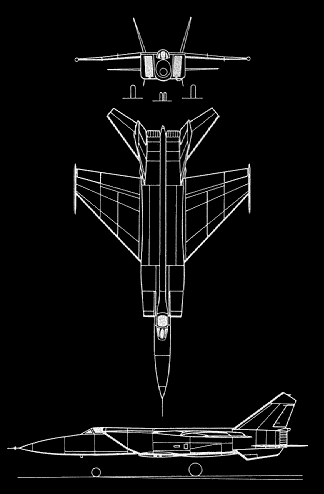






 |
VF2 "Kodiak" Attack Fighter
|
||||||||||||||||||||||||||||||||||||||||||||||||||||
|
|||||||||||||||||||||||||||||||||||||||||||||||||||||
 |
ConceptThe VF2 is based on the Russian MiG-25 Foxbat airframe. The VF2 is a multi-role air/space fighter with attack capability. The VF2 is capable of establishing air/space superiority through the conduct of counter-air/space operations, and delivering large munitions with pinpoint accuracy to stationary ground/space targets. FeaturesA combination of improved sensor capability and improved weapons provides first-kill opportunity against threats. The VF2 possesses a sophisticated sensor suite that allows the pilot to track, identify and shoot the threat before it detects the VF2. Significant advances in cockpit design improve the pilot’s situational awareness. Superior structural integrity allow the VF2 to take a significant amount of damage and still deliver it's bomb payload to the target. UltracruiseThe VF1 Impulse Engines produce more thrust than any current fighter engine. This allows the VF1 to efficiently cruise at multiple supersonic airspeeds. Ultracruise greatly expands the VF1’s operating envelope in both speed and range over current fighters, which must use afterburner to operate at supersonic speeds. In addition, since the SF/A-1's engines are not air-breathing, they can operate in the vacuum of space, boosting the plane to speeds greater than 50,000 mph. Power PlantA small nuclear fusion reactor provides the power for two first-generation Impulse engines and all other on-board systems. Fuel is a deuterium/helium-3 mixture stored in the wing tanks. The Impulse engines have three-dimensional thrust vectoring nozzles and several secondary nozzles to provide exceptional manuverability both in the air and in space. |
||||||||||||||||||||||||||||||||||||||||||||||||||||
 |
 A VF2 lifts above the ruddy atmosphere of Mars |
||||||||||||||||||||||||||||||||||||||||||||||||||||
 |
ArmamentsNine external weapons stations, comprising two wingtip stations for AA missiles; two outboard wing stations for an assortment of AA or AG weapons; two inboard wing stations for external fuel tanks, AG weapons or advanced tactical weapons; two fuselage stations for AA or AG weapons, tactical pods or advanced tactical weapons; one centerline fuselage station for external fuel or thermonuclear torpedo. Air-to-air (AA) weapons include short-range AIM-9X Sidewinders, medium-range AIM-120X AMRAAMs, all with conventional or tactical nuke warheads. Air-to-ground (AG) weapons include GBU-10 and -12 laser-guided bombs, CBU-59 cluster bombs, AGM-84X Harpoons and AGM-65X Maverick missiles with conventional or tactical nuke warheads. The centerline weapon station can accomodate one Tomahawk Cruise Missile. Twin Internal X-Ray Laser Cannons powered by focused thermonuclear explosions in the gun's prefire chamber. Fuel for the guns is drawn from the main fuel tanks. Output per shot is 1.21 gigawatts per barrel, and produces a beam hotter than the sun. |
||||||||||||||||||||||||||||||||||||||||||||||||||||
 |
 A VF2 heads back home after a successful mission |
||||||||||||||||||||||||||||||||||||||||||||||||||||

